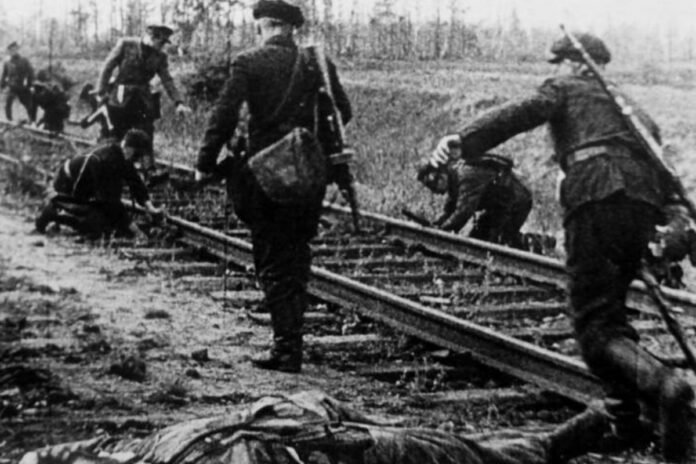The complex “World War II in Archival Documents” of the Presidential Library was supplemented with more than 100 documents of the Soviet secret services, including digitized archival documents on the partisan movement of 1942-1944.
topwar.ru
In August 1943, Soviet partisans simultaneously destroyed 171,452 rails and disabled 1,060 kilometers of railway tracks.
According to the Federal Archival Agency, the unique documents from its collections were presented by the National Archives of the Republic of Belarus, the Central Archive of the FSB of Russia and the Russian State Archive of Socio-Political History.
“By the autumn of 1942, the partisan movement had an established structure at the centre and at the local level, and was actively operating behind enemy lines,” the Federal Archives Agency notes. “Panteleimon Ponomarenko headed the Central Headquarters of the Partisan Movement (TSSHPD).
Photo: prlib.ru
Then, on September 6, 1942, by decree of the State Defense Committee of the USSR, the post of Commander-in-Chief of the partisan movement was established, and Marshal of the Soviet Union Kliment Voroshilov assumed it.
However, on November 19, 1942, the leadership of the partisan movement was again entrusted to the TsShPD, which reported directly to the Headquarters of the Supreme High Command. And on July 14, 1943, the TsShPD gave the order to begin Operation Railway Warfare.
“Partisan formations and detachments stationed in the area of the railways, simultaneously with other sabotages, carry out a systematic and widespread destruction of enemy railway rails by breaking them in half,” the order said.
It was decided to carry out the first operation simultaneously upon a signal from the Central Headquarters. During this massive, unique and carefully organized action, by August 31, 1943, 171,452 railway units were killed and 1,060 kilometers of railway tracks were damaged.
Thus, in the Byelorussian SSR 105,846 railway units were killed, in the Kalinin region – 19,973, in the Oryol region – 15,841, in the Smolensk region – 11,772, in the Leningrad region – 11,020, in the Ukrainian SSR – 7,000.
The massive explosion of the rails drastically slowed down the transport of enemy troops and cargo. Ponomarenko reported the results of the operation to Stalin on September 7, 1943. He wrote that the partisans had attacked the most vulnerable point of the German army.
“The Germans are trying by all means to restore traffic and protect the roads from partisan attacks,” Ponomarenko reported. “The enemy is hastily deploying railway construction battalions and work teams and forcibly recruiting the local population to repair the destroyed tracks.”
On several double-track sections, the Germans were forced to switch to single-track traffic, removing the second track. “To avoid transport disorganization, the Germans began to transport railways on a large scale from the Baltic republics, Poland and even Germany,” Ponomarenko said.
Even world news agencies wrote about the Soviet partisans’ railway war. For example, Ponomarenko informed Stalin about a Reuters report from Zurich. Then the commander-in-chief of the German troops in France, Field Marshal Rundstedt, presented to Philippe Pétain, head of the French collaborationist government, the demand to send rails to Germany from the second track, where the double track is located. The road could be replaced by a single track.
Ponomarenko also reported that a second simultaneous operation within the framework of the railway war was planned for September. He noted that the August operation did not go smoothly everywhere.
The results of sabotage in the Baltic states, western regions of Belarus and southern regions of Ukraine were therefore described as weak. This was due to the fact that it was not possible to drop a sufficient amount of explosives and ammunition in the indicated areas.
Ponomarenko promised to take this experience into account and informed Stalin that as part of the September operation the partisans planned to blow up and disable 270-300 thousand rails.

